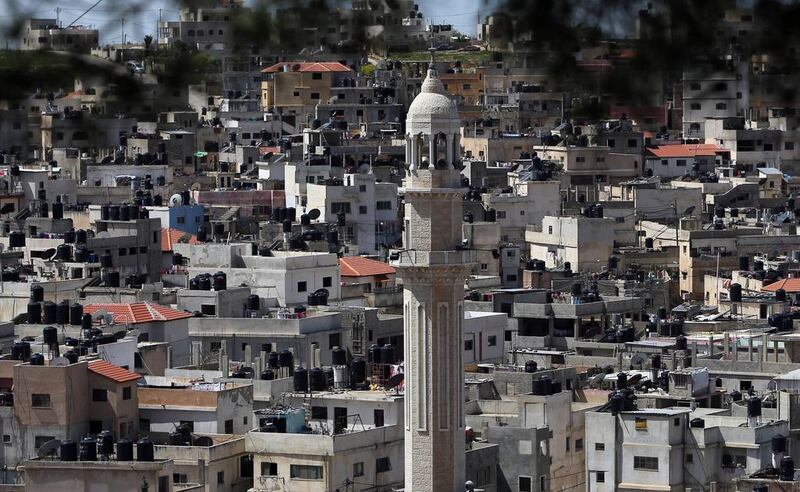JALAZON REFUGEE CAMP, PALESTINIAN TERRITORIES // Nael Al Sharif is working on an extension to his property in the Jalazon refugee camp in the Israeli-occupied West Bank.
But he is not building outwards, instead he is expanding upwards.
In many of the Palestinian camps, which have evolved through the decades into densely populated areas teeming with narrow alleyways, families that cannot afford to buy new land simply add floors to existing property.
Mr Al Sharif, 43, says his two-storey home is too small for his entire family of around 30 people, so he is looking to add another two floors.
“We’re suffering from an enormous housing problem,” he says. “We’re practically sleeping on top of each other — my six sons share one single room, and me, my wife and two other children sleep in another.
“So we decided to build two more floors. I can’t afford any more land outside the camp.”
With growing concerns about safety in the ever-expanding camps, the UN agency for Palestinian refugees (UNRWA), has banned construction beyond two floors on foundations not designed to support tall buildings.
The agency does not provide aid to home owners who break the rule.
“Over the years, these camps have transformed from temporary ‘tent cities’ into hyper-congested masses of multistorey buildings with narrow alleys, characterised by high concentrations of poverty and extreme overcrowding,” the agency says.
“The camps are considered to be among the densest urban environments in the world, but because camp structures were built for temporary use, over the decades the buildings have become overcrowded, critically substandard and in many cases life-threatening,” UNRWA says.
But the ban has had little effect, with residents saying they have no choice but to look to the sky.
Jalazon, seven kilometres north of the West Bank city of Ramallah, is one of 18 UN-run refugee camps in the West Bank.
Established in 1949 on 25 hectares of land, it was originally home to 2,500 people. Today, Jalazon’s population numbers 14,000, officials at the camp say.
Although its population has grown, the camp has not. This has caused a severe housing shortage, prompting residents to build the only way they can — upwards, in a chaotic fashion and without architectural input.
“Housing is a big problem here,” says 60-year-old Khadija Dawud whose three-storey home is crammed with 63 family members.
“We can’t buy land outside the camp because we can’t afford it.”
Mahmud Mubarak, who heads the local committee which runs Jalazon, confirmed that people are building upwards because they cannot afford new land.
“In 1950, UNRWA built one room and a kitchen for each family of five, and two rooms and a kitchen for each family larger than that,” he says.
“Population growth has been a massive problem, and properties have been extended in an unsafe way. But they have no choice.”
Both UNRWA and the camp’s local committee have warned about the growing height of buildings.
“This situation is dangerous for the camp’s residents because building work is done unsafely, without architectural supervision, and on unstable foundations,” Mr Mubarak says.
UNRWA public information officer Nader Dagher said that the lack of space coupled with population growth was a major concern.
“These camps began as tents on the ground. Most of the camps were built on less than half a square kilometre, and this is not sufficient to allow for natural population growth,” Mr Dagher says.
The 18 West Bank camps and one in Shuafat in annexed east Jerusalem collectively house around 220,000 people, UN figures show.
Established in territory that was then held by Jordan, they provided temporary accommodation for Palestinians who fled or were forced out of their homes during the war that accompanied Israel’s establishment in 1948.
“We are truly concerned about the safety of people inside the camps,” Mr Dagher says.
He says expanding beyond the perimeters of the camps is not feasible since most were built alongside existing Palestinian towns and villages, near Jewish settlements or alongside the towering West Bank barrier.
“The solution is to have a comprehensive resolution of the refugee issue and not through a partial solution here or there.”
* Agence France-Presse





